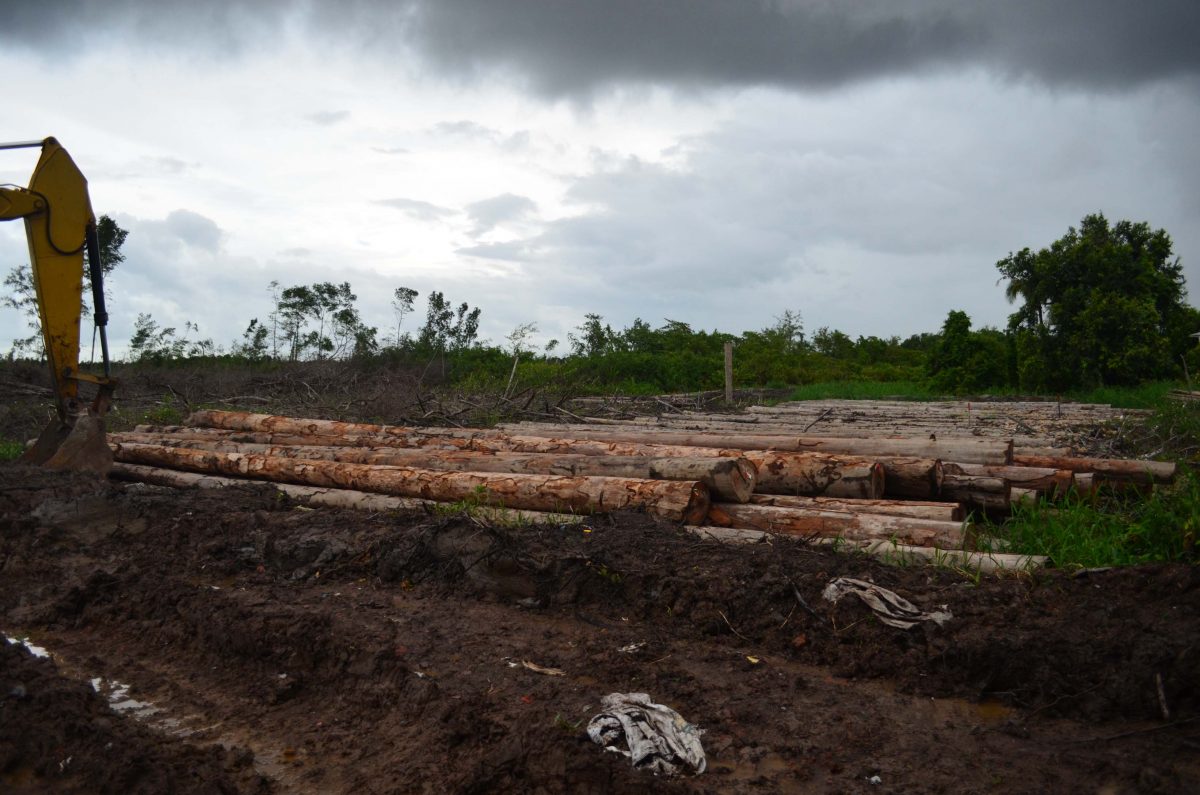The construction of a shore base facility at Malgre Tout/Versailles, West Demerara, has seen a substantial amount of mangroves being cleared along the shoreline earmarked for the project and residents are now worried that it could leave them vulnerable to flooding.
The construction of the shore base facility, which is being undertaken by Tristar Incorporated, commenced in January. It will consist of a storage facility, a wharf and a jetty.
However, recognising the destruction of the mangroves, which may have exceeded what was approved, residents are now questioning what sort of river defence will be put in place to protect them.
“We are concerned as mangroves provide coastal defence against flooding… and their removal is a major concern to us…flooding remains a major concern to us,” resident Shawn Johnson said in a letter to Stabroek News on behalf of other residents. Mangroves are a protected species and concerns have been expressed previously that the oil and gas industry will pose a threat to large swathes.
Johnson said that he has been in contact with almost every stakeholder who shares responsibility for the protection of mangroves but he has not been successful in securing a clear understanding as to why and how they were allowed to be cut down.
When contacted, Minister of Public Works Juan Edghill, under whose ministry the Sea Defence Board operates, explained that a no-objection was granted for the development on the grounds that the developer provided a detailed proposal to ensure that the sea defence will not be compromised.
According to Edghill, the developer will have to invest heavily in building up and protecting the sea defence to avert any major damage to lives and livelihoods.
“If they remove the sea defence, in this case mangroves, they are required to create a new one using hard material, whether it be revetments or rip raps. The sea defence will have to be replaced. This was not a willy-nilly process; it was done thoroughly with wide discussions,” Edghill asserted.
While recognising the importance of mangroves and the benefits they provide to the environment, Edghill also said that development must not be stymied.
According to Johnson, he has made numerous calls to the Guyana Forestry Commission, the National Agricultural Research and Education Institute (NAREI) and the Environmental Protection Agency to enquire whether permission was granted for the project.
Johnson said when he contacted the GFC he was informed that the GFC did not approve the clearing of the mangroves and directed him to NAREI.
From his conversation with NAREI, he related he was informed that approval was granted by the Sea Defence Board but there was a limit to what should have been cleared.
According to Johnson, from the explanation given, the developers cleared more than what was permitted by the Board and the matter was being discussed at the Board level.
“I was also informed by NAREI that the EPA had authorised the project but no activities were supposed to start until all approvals were in order. NAREI was unfortunately unable to provide me with any of these permits or approvals. I then decided to try my luck with the EPA. The EPA informed me that I would need to make a complaint with their complaints division. When I tried to make the complaint, I was then told to discuss my issues with the Infrastructure Department. To date, I am unable to get any concrete information on the project from the EPA nor a copy of the Permit issued by the EPA,” the concerned resident said.
Johnson, in his letter, questioned how the Sea Defence Board would treat the developers clearing more of the mangroves than they approved, and whether the clearing of mangroves was properly considered.
During a visit to the community yesterday, Stabroek News observed the portion of land to be cleared and some amount of mangroves removed. However, due to the deplorable state of the sea dam, this newspaper was unable to get a clear view of the quantity of mangroves removed from the project area.
An elder resident, Percy Corlette, told this newspaper that living along the west bank of the river has exposed him to flooding during extreme high tides. He noted that in the past and as recent as last week, his yard was flooded as a result of overtopping.
“I am very concerned [about] what will happen now because the mangroves they said were helping to protect us from severe flooding. But if they cut away [mangroves] from an area, I am sure it will affect us,” Corlette said.
When Stabroek News spoke with the Chairman of the Malgre Tout/Met-en-Meerzorg Neighbourhood Democratic Council, Tennessee Vickerie, he explained that during consultations the council had raised objections to the destruction of the mangroves. He noted that it communicated its concern among others to the Central Housing and Planning Authority and other agencies during the process for approval of the project.
He noted too that the EPA had also expressed concerns during the consultation and application process and it is unclear to the NDC on what grounds approval was given for the development.
Chief Executive Officer of NAREI Jagnarine Singh, when contacted by Stabroek News, said he was not in a position to comment on the matter at this time, while calls to the EPA went unanswered.






